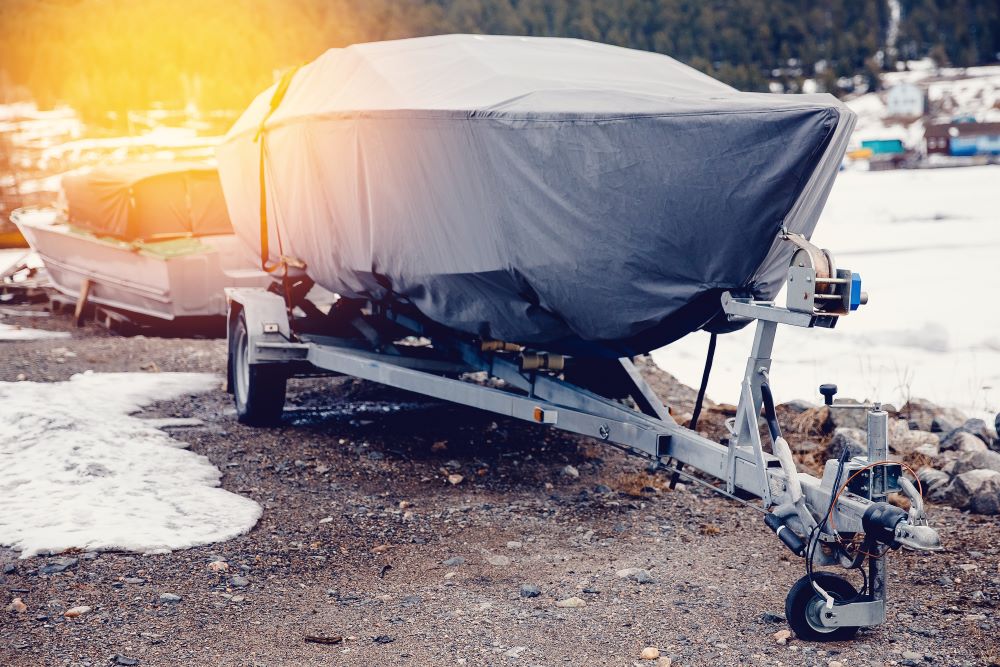
How to Winterize Outboard and Inboard Boat Motors
The winterizing process involves several simple tasks that motorboat owners should carry out as the unforgiving weather of winter approaches.
In this article, find out why it’s important to winterize a boat motor and how to go about it. There are two distinct types of boat motors, outboard and inboard, so we’ll cover the winterizing process for both.
The importance of winterizing your boat motor
When done correctly, winterizing a boat motor protects it from various types of damage that can occur during the winter and affect its ability to function.
For example, when a motor isn’t properly winterized, water may be left in certain components. When the temperature drops below zero, the water in the boat freezes, increasing its volume and putting immense pressure on the affected parts of the motor, which may break under the strain. Multiple freeze-thaw cycles can compound the problem.
Winter often brings high humidity levels that can rust the metal parts of the motor, causing damage and other problems.
Winterizing your motor is the best way to maximize its lifespan and prevent the damage caused by freezing and corrosion.
Besides, winterizing your boat motor will save you a lot of time and energy when boating season starts up again in the spring!
How to winterize an outboard motor
Outboard motors are boat propulsion systems that include a motor, gearbox and propeller or jet drive in a self-contained unit that is designed to be mounted outside the transom.
Steps for winterizing an outboard motor:
- Flush the motor with fresh water by using a flusher or running it in a tank full of clean water.
- Clean the powerhead and exterior surfaces to remove as much dust and debris as possible.
- Fill the oil tank with the type of oil recommended in the engine manual.
- Change out the oil filter.
- Change the oil in the gear case and replace the seals on the drain plugs.
- Spray the gear case with fogging oil to prevent the components from rusting.
- Drain the fuel from the fuel filter and replace with new fuel.
- Replace the fuel water separator filter (if applicable).
- Drain the fuel from the vapour separator tank or carburetor (if applicable).
- Grease all pivot points and seals inside and outside the motor.
- Grease the prop shaft.
- Disconnect the battery (remember to charge it at least twice over the winter).
- Spray the powerhead and rubber components with fogging oil.
- Cover the engine with a waterproof tarp or canvas.
- Store the engine in a dry place (if possible).
How to winterize an inboard motor
Unlike outboard motors, which are attached to the stern of a boat, inboard motors are housed inside the hull of the boat, either in the bilge or in their own engine room on large vessels.
Steps for winterizing an inboard motor:
- Flush the motor with fresh water.
- Use an oil vacuum pump to drain the oil from the engine without letting any oil drip into your boat.
- Change out the oil filter.
- Replace the oil using the type recommended by the manufacturer.
- Place the water pump intake hose in a bucket of clean water and run the motor for around 10 minutes to let the water drain out.
- Change out the transmission fluid.
- Remove the spark plugs (replace them if they’re in bad shape) and put some motor oil inside the cylinders.
- Fill the cooling system with antifreeze.
- Cover the boat with a tarp or canvas designed for that purpose.
Don’t let winter catch you off guard! Winterize your boat before the cold weather comes
That concludes our overview of end-of-season boat motor maintenance. If you take the time to winterize your boat by following the steps outlined above, you will maximize your craft’s lifespan and start off on the right foot next spring.
If you don’t already have your pleasure craft operator card, why not purchase it now to prepare for the next boating season? The law requires every pleasure craft operator to carry a licence when boating on Canadian waters. By buying your Canadian boating licence online this fall, you’ll have one thing less to worry about before taking to the water next year.

